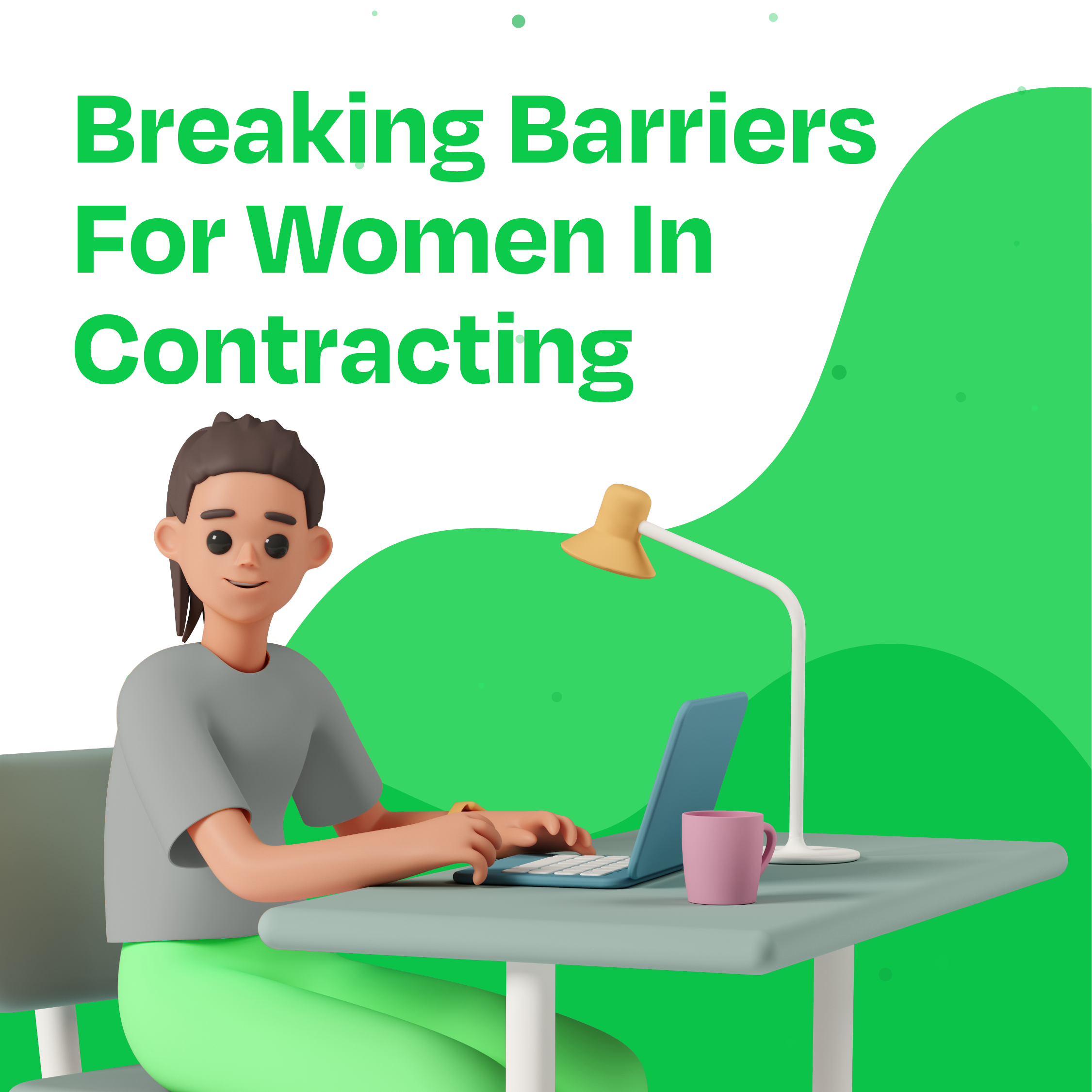Breaking Barriers for Women in Contracting
This month marks Women’s History Month, with International Women’s Day observed around the world on March 8th. It’s an ideal time to reflect on the strides towards gender equality over the ages, not least in the world of work. While professional contracting has seen significant evolution towards a level gender playing field, there is clearly still a way to go.
At Liquid Friday, we support contractors working through recruitment agencies across multiple sectors and industries – you could say it’s a microcosm of UK contracting as a whole. Yet the gender split of our contractor base reflects a wider underrepresentation of women in professional contracting roles – 87% male, compared to just 13% female.
Challenges and Barriers
So, what are the reasons behind this gender imbalance and more importantly, what can be done to break down these barriers and create a more inclusive contracting ecosystem?
“Jobs for the Boys”
Traditional gender roles and stereotypes have long shaped societal expectations about expected career paths for men and women. Contracting roles, often associated with industries like construction and engineering, have historically been perceived as male-dominated fields. These stereotypes can discourage women from pursuing careers in these sectors.
The data stacks up to support the persistence of such stereotypes – of Liquid Friday contractors placed on temporary assignment in engineering roles for example, 96% are male. It’s a similar story across the board; the UK has the lowest proportion of female engineers in Europe*, and in the construction industry only 14% of roles are held by women**.
Positive change is happening in this area, albeit slowly. The number of women choosing careers in construction and engineering is on the increase, with women making up 37% of new entrants into the construction industry from higher education**.
Networking and Bias
In the contracting world, networking plays a crucial role in career advancement – it’s often not what you know, but who you know. If there is a prevailing gender bias or exclusionary practices in networking circles, women may find it challenging to access the same opportunities as their male counterparts. Overcoming these biases requires a concerted effort to foster inclusive networks.
Lack of Representation
The absence of visible female role models in contracting roles may be another contributory factor in gender disparity. Without representation, women may struggle to envision themselves succeeding in these professions. Companies that actively showcase successful women in contracting can help break down these barriers and inspire more women to pursue similar paths.
Workplace Culture and Discrimination
Some women may avoid or leave contracting roles due a received or actual hostile workplace culture. Instances of discrimination, unequal treatment or a lack of support for work-life balance can create a less inclusive environment. Creating a workplace culture that actively addresses these issues is crucial for attracting and retaining female talent.
Education and Training Gaps
Gender equality in education is a massive topic to unpack in itself, but suffice to say that gender disparity in all levels of education and training undoubtedly impacts the pipeline of qualified female candidates entering contracting roles.
Encouraging and supporting women in pursuing relevant education and training opportunities is essential for breaking down these barriers and ensuring equal access to skill development.
Inflexible working arrangements
The demanding nature of contracting may be a deterrent for some women, with the perception that contract work demands long hours and constant mobility which is unconducive to work-life balance. This is a particular barrier where a woman bears the lion’s share of caregiving responsibilities, although in recent years this has become ever more equal in the modern family dynamic. Offering flexible working arrangements can help make contracting roles more accessible to a diverse workforce.
Opportunities and Benefits for women in contracting
Addressing the gender imbalance in contracting requires the whole supply chain to tackle these underlying issues. By challenging stereotypes, promoting diversity and fostering inclusive workplace practices, all industry sectors can nurture a contracting environment where talent is recognised and rewarded irrespective of gender. Indeed, despite the challenges, contracting presents numerous opportunities and benefits for women, making it a field ripe for positive change.
Flexibility
Despite frequently-held perceptions to the contrary, one of the most enticing aspects of contract work is the flexibility it offers. Women in contracting, often juggling multiple responsibilities, can benefit from the freedom to choose projects and schedules that align with their personal and professional commitments.
Higher Pay Rates
Contracting roles in certain sectors attract lucrative pay rates compared to employed roles, This makes them an attractive option for all professionals looking to maximise their earning potential and may be a way for women to circumvent the traditional gender pay gap that exists in some industries.
Skill Development
Contracting roles often involve working on various projects with different clients, leading to diverse skill development and career advancement opportunities. Women in contract positions are able to enhance their skill sets rapidly, becoming highly agile, in-demand professionals.
“Contracting should be more accessible”
Julia Kermode, of IWORK, a platform championing independent workers, expressed disappointment at the persisting gender imbalance evident in professional contracting, commenting:
“The fact remains that fewer women are in work in the UK compared to men (78.1% men vs 72.1% women)✝, and the disparity is even more acute within the contracting sector. There is no logical reason for this to be the case, particularly as deciding how, where and when you work is often a key reason for choosing contracting as a career. This means that the traditional gender bias towards women juggling work with caring responsibilities should not be a barrier, and in fact contracting should be more accessible to women. It is disappointing that this is not the case, particularly as evidence confirms it would bring significant advantages to individuals, businesses and the economy as a whole.”
To encourage more women to enter contracting roles, it’s crucial to address the existing barriers and create a supportive environment. This is a collective effort. As the industry recognises and addresses the challenges, and as more women experience the benefits and possibilities it offers, we can look forward to a future where the landscape of contracting is truly diverse, inclusive and representative of the talent and potential of all individuals, regardless of gender.
Sources:
* The Guardian
** Go Construct
✝ ONS 2024




